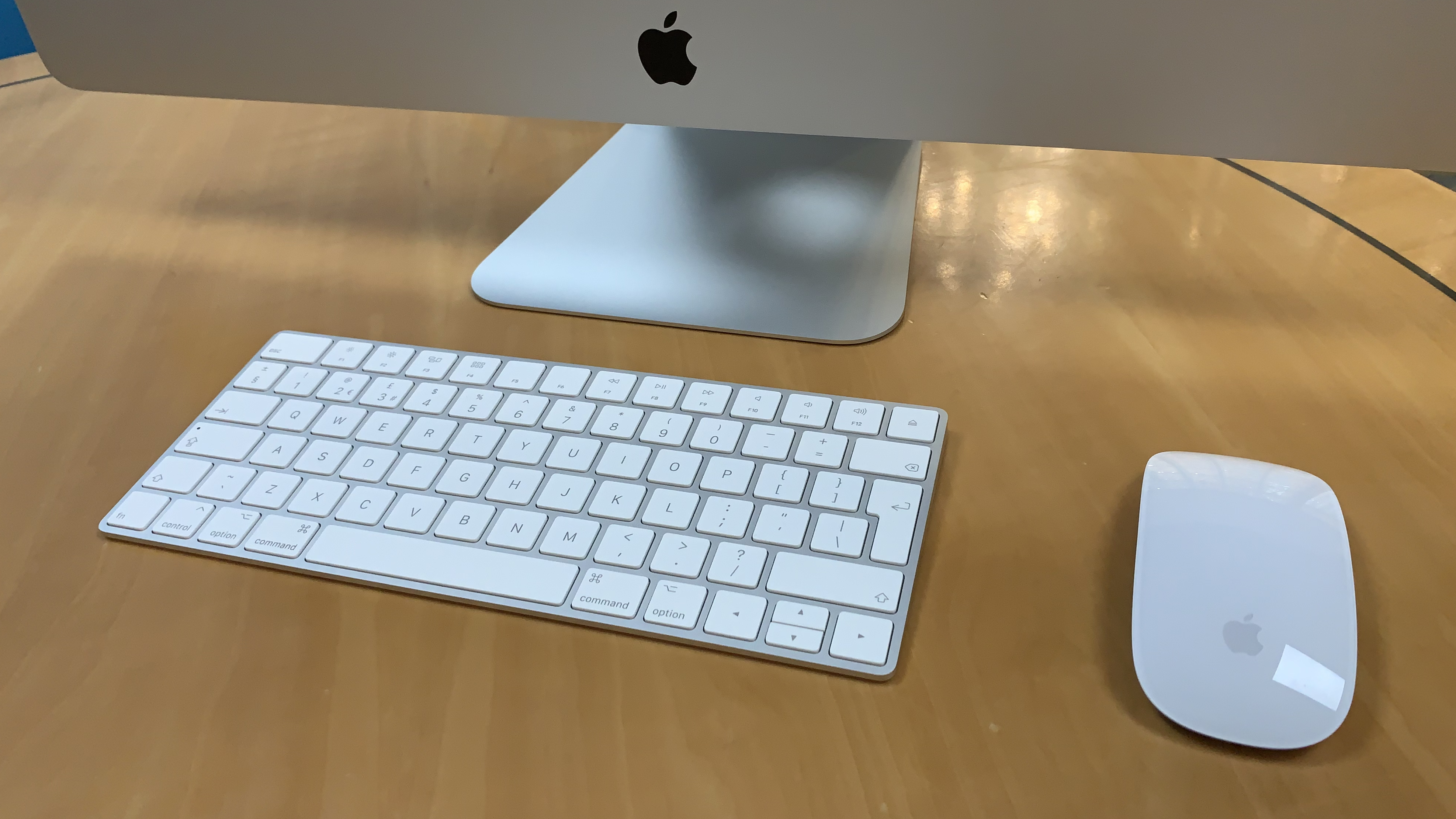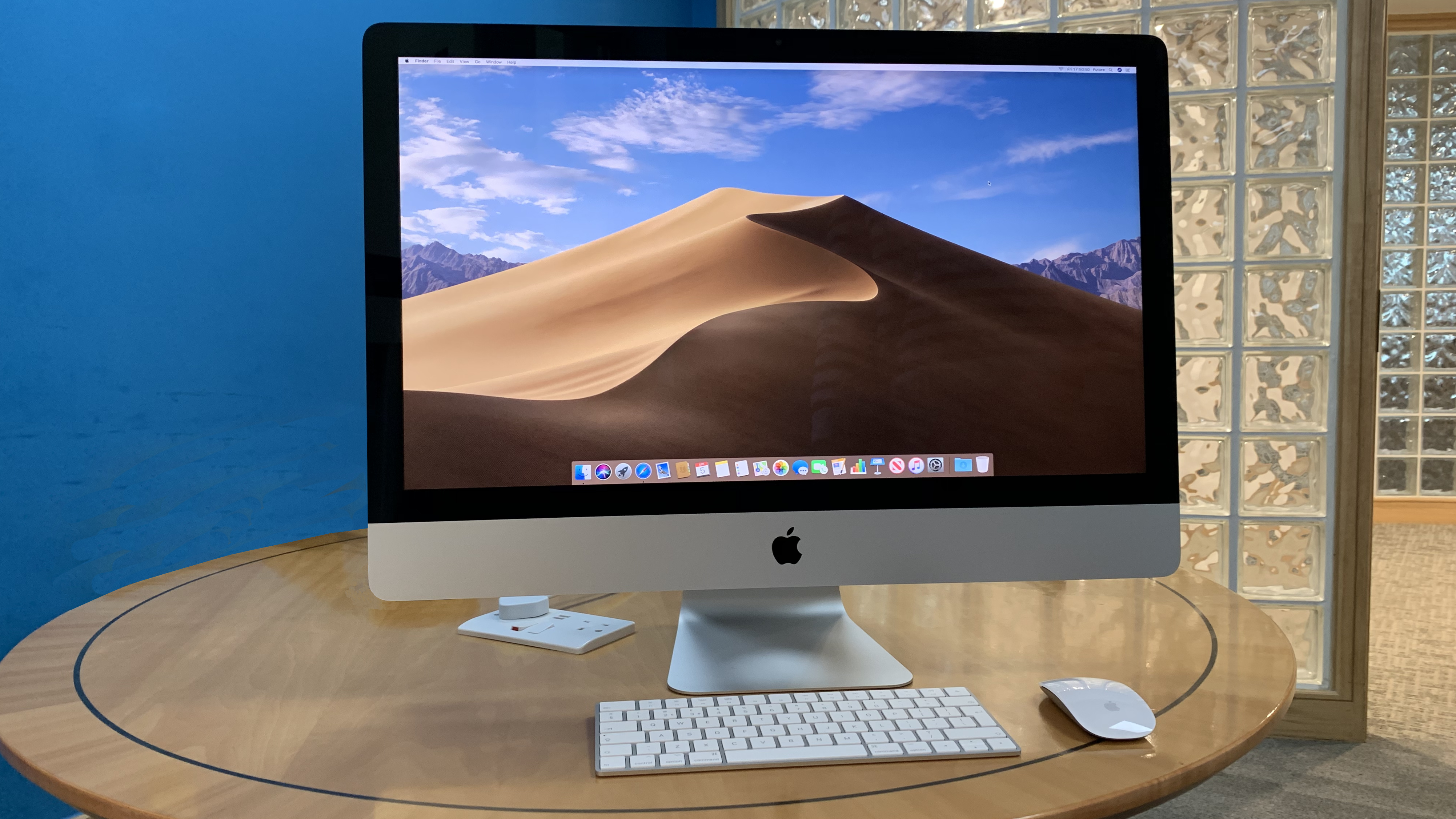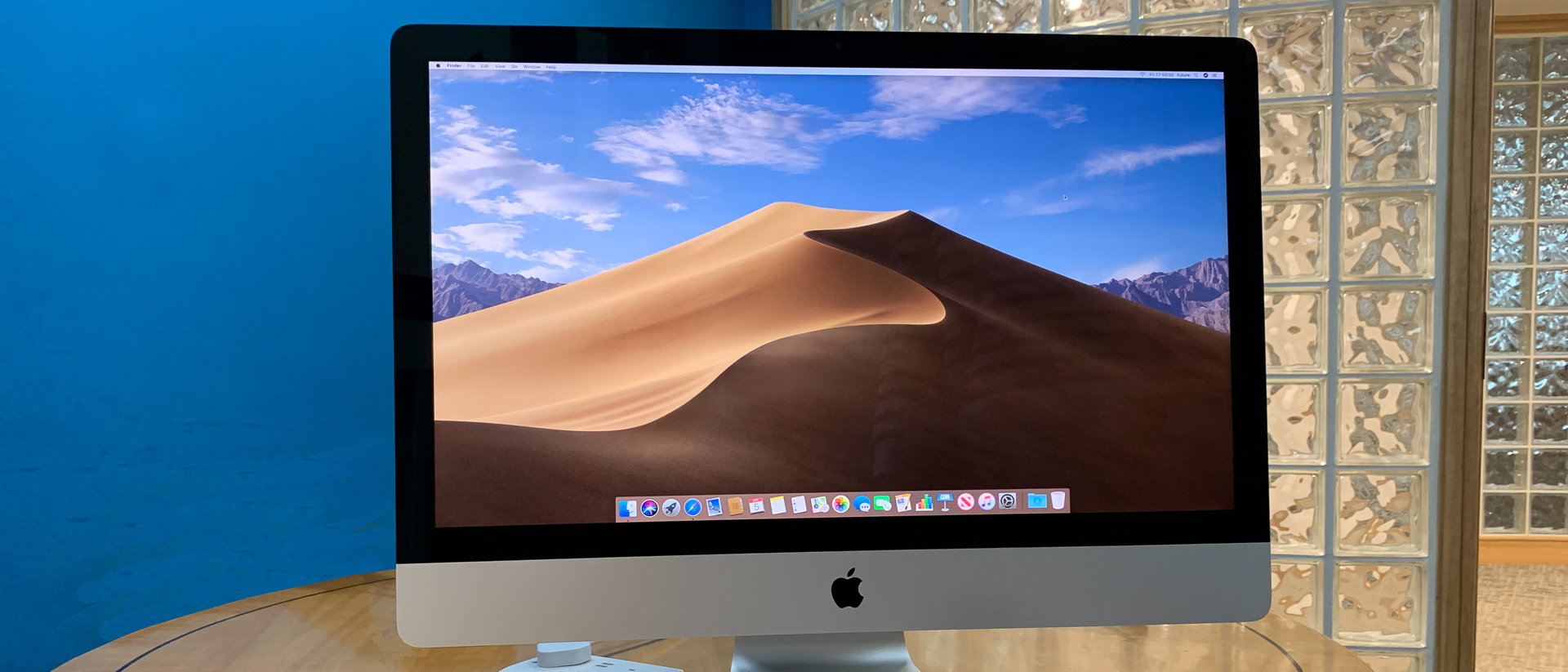TechRadar Verdict
Apple has updated the CPU options on the 27-inch iMac to bring it in line with the higher-end PCs and while you can equip it with a decent GPU and an SSD drive, it all comes at a price. The standout feature continues to remain the gorgeous 5K display
Pros
- +
Core i9 and Vega 48 options
- +
Remains quiet with heavy workload
- +
Stunning 5K display with wide color gamut
Cons
- -
8GB RAM as base is low
- -
Mouse remains annoying to charge
- -
Standard storage still has spinning drives
Why you can trust TechRadar
The iMac was last updated in 2017 and was starting to feel a bit stale for someone looking to buy an all-in-one computer. Though Apple introduced the iMac Pro last year, it was strictly priced for the professionals.
We finally have a new iMac which is more-or-less a spec bump over the older model. However, Apple does give you options to spec it up pretty high competing with the iMac Pro.
The model we are looking at the highest-end iMac you can walk out with at an Apple Store. That's a ninth generation Core i5 processor (CPU) with six cores, an AMD Radeon 580X graphics processor (GPU) and a 2TB Fusion drive which has 128GB of solid-state storage and 2 TB of spinning storage.
Looking at it from the outside, you won't be able to tell this 2019 iMac apart from the model released in 2017. Apple has been using the same tapered body since late 2012 – the longest it has stuck with any particular look for the iMac, if you ignore small changes to the port line-up.
There may be an element of “if it ain’t broke…” to that lack of evolution. With talk of Apple moving the Mac to ARM-based processors, we have a sneaking suspicion that a radical redesign hinges around that.
Here is the 27-inch Apple iMac configuration we are looking at
CPU: 3.7GHz Intel Core i5-9600K (six-core, 9MB cache, up to 4.6GHz with Turbo Boost)
Graphics: AMD Radeon Pro 580X (8GB VRAM)
RAM: 8GB DDR4 (2,666MHz)
Screen: 27-inch 5K (5,120 x 2,880) Retina display (P3 wide color)
Storage: 2TB Fusion Drive
Ports: 4x USB 3 (Type-A), 2x Thunderbolt 3 (Type-C), SDXC card slot, 3.5mm headphone jack, Gigabit Ethernet, Kensington lock slot
Connectivity: 802.11ac Wi-Fi, Bluetooth 4.2
Operating system: macOS 10.14.4 Mojave
Camera: FaceTime HD
Weight: 20.8 pounds (9.42kg)
Size: 25.6 x 8 x 20.3 inches (65 x 20.3 x 51.6cm; W x D x H)
Price and availability
The 27-inch iMac (2019) is available in three off-the-shelf models. The entry-level (AED 7,559) and the mid-range (AED 8,399) models comes with an eighth-generation, six-core Intel Core i5 processor. At the top of the 27-inch iMac line-up, the model we are looking at, includes a ninth-gen, six-core i5 as standard. That’ll set you back AED 9,659, which is actually the most affordable way to get a ninth-gen CPU in an iMac.
It’s not the only way, but the other – adding the more powerful eight-core i9 adds AED 2,100 to the mid-range spec or AED 1,680 to the highest standard config. If you think that's pricey, keep in mind that upgrading to the Vega 48 GPU is another AED 1,890 to the highest-end model. Now, do you want to add SSD on top of that as well?
Design
As noted earlier, Apple has been using this look for the iMac for more than six years now. Make of that what you will, but there’s not much to complain about.
The one obnoxious thing is right in your face, though: the display’s thick black bezel and the aluminium chin beneath it look increasingly old-fashioned.
Apple has managed to trim some of that fat from all of its MacBooks, on which doing so must have been more of a challenge, but disappointingly Apple doesn’t seem to be in a hurry to do the same for its all-in-one desktop.
Changing the overall good look isn’t urgent, though. This particular iteration has aged gracefully, and continues to be elegant where the thicker models from 2011 and earlier didn’t. That is, when you see it from any angle other than head-on. The back’s gentle curve helps even a computer this big to appear low-key among its surroundings.
We’re pleased with the iMac’s heat management, too, even when putting the high-end components in our review unit through a tough test. Our HEVC video conversion in HandBrake comes close to maxing out all processing cores.
Despite that, the iMac’s fan was quiet enough not to be distracting, even while chucking a good amount of heat out of the rear vent.
Mousing around
You get a wireless mouse and keyboard with the iMac. We wish Apple would allow customers to reject them to save money; you may simply not get on with the mouse’s shape and lack of key travel.
Though Apple sells the Mac mini that way, that initiative dates back to the aughts, when it wanted Windows defectors to keep using their existing mouse and keyboard. It was an implicit acknowledgement that you were probably happy enough with those accessories.

Apple’s Magic Mouse 2 continues to raise eyebrows over its Lightning charging port being on the bottom, which prevents simultaneous charging and use.
Some people don’t get on with that mouse, either due to its low profile or because they accidentally trigger features, thanks to the touch-sensitive surface. The ability to turn off gestures helps with the latter issue, and you can tell the right side to act as a right click, rather than having to hold the Ctrl key.
One option is to swap the mouse for a Magic Trackpad 2 (extra AED 210 at checkout). You might find it easier not to trigger gestures when the device used to move the pointer doesn’t slip around under your fingers.
The laptop-size Magic Keyboard can also be swapped out, for a version with a numeric keypad that is also wireless (extra AED 120 at checkout). But, key travel on Apple’s keyboards is generally low, which you may find uncomfortable enough to warrant adding a third-party alternative.

Picture this
If 8GB of RAM by default on the 27-inch iMac seems stingy, look at rivals’ specs in full to see where else they might have compromised. For example, with the Dell Inspiron 7000, you only have to look as far as the display.
Though also 27 inches diagonally, it has a 4K UHD (3,840 x 2,160) panel. That’s slightly lower resolution than even the 21.5-inch iMac’s truly 4K, 4,096 x 2,304 screen. That means bigger pixels and a less-sharp image than you get with either size of iMac.
There’s nothing to worry about with the entry-level, 27-inch iMac’s display like there is on the 21.5-inch models, where Apple still uses a plain HD panel on the cheapest model. Every 27-inch iMac display supports a wide (P3) color gamut.
Whichever 27-inch model you buy, you get a brilliant screen that excels in highlighting extra detail when editing photos – provided you have a similarly capable camera.
Even if tasks like photo editing don’t apply, you’ll benefit from macOS Mojave looking super-sharp on displays with a high pixel density. It has done so for years, so throughout the operating system, Apple’s apps and many third-party offerings, the iMac’s display is delightful to look at.
- Images Credit: TechRadar
- Discover the best Mac VPN you can download
- 1
- 2
Current page: Introduction, price, design and display
Next Page Performance, features and verdict
Abbas has been living and breathing tech before phones became smart or clouds started storing data. It all started when he got his very first computer- the Sinclair ZX Spectrum. From computers to mobile phones and watches, Abbas is always interested in tech that is smarter and smaller because he believes that tech shouldn’t be something that gets added to your life- it should be a part of your life.
